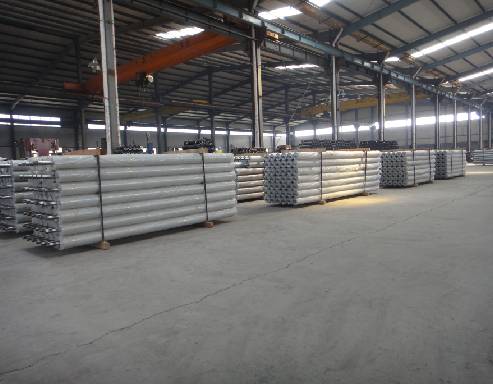 Afrikaans
Afrikaans  Albanian
Albanian  Amharic
Amharic  Arabic
Arabic  Armenian
Armenian  Azerbaijani
Azerbaijani  Basque
Basque  Belarusian
Belarusian  Bengali
Bengali  Bosnian
Bosnian  Bulgarian
Bulgarian  Catalan
Catalan  Cebuano
Cebuano  Corsican
Corsican  Croatian
Croatian  Czech
Czech  Danish
Danish  Dutch
Dutch  English
English  Esperanto
Esperanto  Estonian
Estonian  Finnish
Finnish  French
French  Frisian
Frisian  Galician
Galician  Georgian
Georgian  German
German  Greek
Greek  Gujarati
Gujarati  Haitian Creole
Haitian Creole  hausa
hausa  hawaiian
hawaiian  Hebrew
Hebrew  Hindi
Hindi  Miao
Miao  Hungarian
Hungarian  Icelandic
Icelandic  igbo
igbo  Indonesian
Indonesian  irish
irish  Italian
Italian  Japanese
Japanese  Javanese
Javanese  Kannada
Kannada  kazakh
kazakh  Khmer
Khmer  Rwandese
Rwandese  Korean
Korean  Kurdish
Kurdish  Kyrgyz
Kyrgyz  Lao
Lao  Latin
Latin  Latvian
Latvian  Lithuanian
Lithuanian  Luxembourgish
Luxembourgish  Macedonian
Macedonian  Malgashi
Malgashi  Malay
Malay  Malayalam
Malayalam  Maltese
Maltese  Maori
Maori  Marathi
Marathi  Mongolian
Mongolian  Myanmar
Myanmar  Nepali
Nepali  Norwegian
Norwegian  Norwegian
Norwegian  Occitan
Occitan  Pashto
Pashto  Persian
Persian  Polish
Polish  Portuguese
Portuguese  Punjabi
Punjabi  Romanian
Romanian  Russian
Russian  Samoan
Samoan  Scottish Gaelic
Scottish Gaelic  Serbian
Serbian  Sesotho
Sesotho  Shona
Shona  Sindhi
Sindhi  Sinhala
Sinhala  Slovak
Slovak  Slovenian
Slovenian  Somali
Somali  Spanish
Spanish  Sundanese
Sundanese  Swahili
Swahili  Swedish
Swedish  Tagalog
Tagalog  Tajik
Tajik  Tamil
Tamil  Tatar
Tatar  Telugu
Telugu  Thai
Thai  Turkish
Turkish  Turkmen
Turkmen  Ukrainian
Ukrainian  Urdu
Urdu  Uighur
Uighur  Uzbek
Uzbek  Vietnamese
Vietnamese  Welsh
Welsh  Bantu
Bantu  Yiddish
Yiddish  Yoruba
Yoruba  Zulu
Zulu Durable Conveyor Belt Rollers for Heavy-Duty Applications and Industrial Use
Heavy Duty Conveyor Belt Rollers Key Components for Industrial Efficiency
In today's fast-paced industrial environment, efficiency and reliability are paramount. One of the essential components that contribute significantly to the smooth operation of conveyor systems is the heavy-duty conveyor belt rollers. These rollers play a vital role in the functionality of conveyor systems used in various industries, including manufacturing, mining, agriculture, and logistics.
Understanding Conveyor Belt Rollers
Conveyor belt rollers are cylindrical components that support the weight of the conveyor belt and the materials being transported. They are integral to the smooth movement of the belt, ensuring that it runs in a straight line and minimizing friction and wear. Heavy-duty rollers are specifically designed to withstand extreme conditions, including heavy loads, high speeds, and adverse environmental factors. Constructed from robust materials such as steel or heavy-duty plastic, these rollers are engineered for durability and longevity.
Types of Heavy-Duty Conveyor Rollers
There are several types of heavy-duty conveyor rollers, each tailored to specific applications.
1. Idler Rollers These rollers help to support the conveyor belt and maintain its tension as it moves. They are designed to be durable and reduce belt sag, ensuring a smooth ride for the materials being transported.
2. Drive Rollers Critical to the operation of the conveyor system, drive rollers are responsible for moving the belt itself. These rollers are often equipped with a motor and are built to handle substantial torque.
3. Return Rollers Located on the underside of the belt, return rollers ensure that the belt returns smoothly to the start of the conveyor cycle. They help to prevent belt tracking issues and enhance overall system efficiency.
4. Guide Rollers These rollers assist in guiding the belt and are often used in curved conveyors. They ensure the belt follows the designated path without misalignment.
heavy duty conveyor belt rollers

The Importance of Heavy Duty Rollers in Industry
The robust design and superior functionality of heavy-duty conveyor belt rollers contribute to overall operational efficiency in several ways
- Load Capacity Heavy-duty rollers can support substantial loads, enabling industries to transport large quantities of materials without the risk of roller failure.
- Reduced Wear and Tear High-quality rollers minimize friction, which reduces wear and prolongs the life of both the rollers and the conveyor belt.
- Versatility These rollers can be adapted to various industrial applications, making them suitable for transporting diverse materials, including bulk items, packages, and heavy machinery.
- Safety By ensuring that the conveyor belt operates smoothly and consistently, heavy-duty rollers help prevent accidents and injuries associated with material handling.
Maintenance and Best Practices
To maximize the lifespan and performance of heavy-duty conveyor belt rollers, regular maintenance is essential. This includes routine inspections for signs of wear and tear, lubrication of moving parts, and adjustments to ensure the proper alignment of rollers. By adhering to a comprehensive maintenance schedule, businesses can prevent unexpected downtimes and extend the service life of their conveyor systems.
Conclusion
In summary, heavy-duty conveyor belt rollers are crucial components that significantly enhance the efficiency and reliability of conveyor systems across various industries. Their robust construction, ability to handle heavy loads, and essential support in maintaining belt alignment make them indispensable for industrial operations. Investing in high-quality heavy-duty rollers and adhering to proper maintenance protocols can lead to increased productivity, reduced operational costs, and enhanced safety in the workplace. As industries continue to evolve and demand higher efficiency, the importance of these rollers will only grow, solidifying their role as a backbone of modern material handling systems.
-
Revolutionizing Conveyor Reliability with Advanced Rubber Lagging PulleysNewsJul.22,2025
-
Powering Precision and Durability with Expert Manufacturers of Conveyor ComponentsNewsJul.22,2025
-
Optimizing Conveyor Systems with Advanced Conveyor AccessoriesNewsJul.22,2025
-
Maximize Conveyor Efficiency with Quality Conveyor Idler PulleysNewsJul.22,2025
-
Future-Proof Your Conveyor System with High-Performance Polyurethane RollerNewsJul.22,2025
-
Driving Efficiency Forward with Quality Idlers and RollersNewsJul.22,2025





























